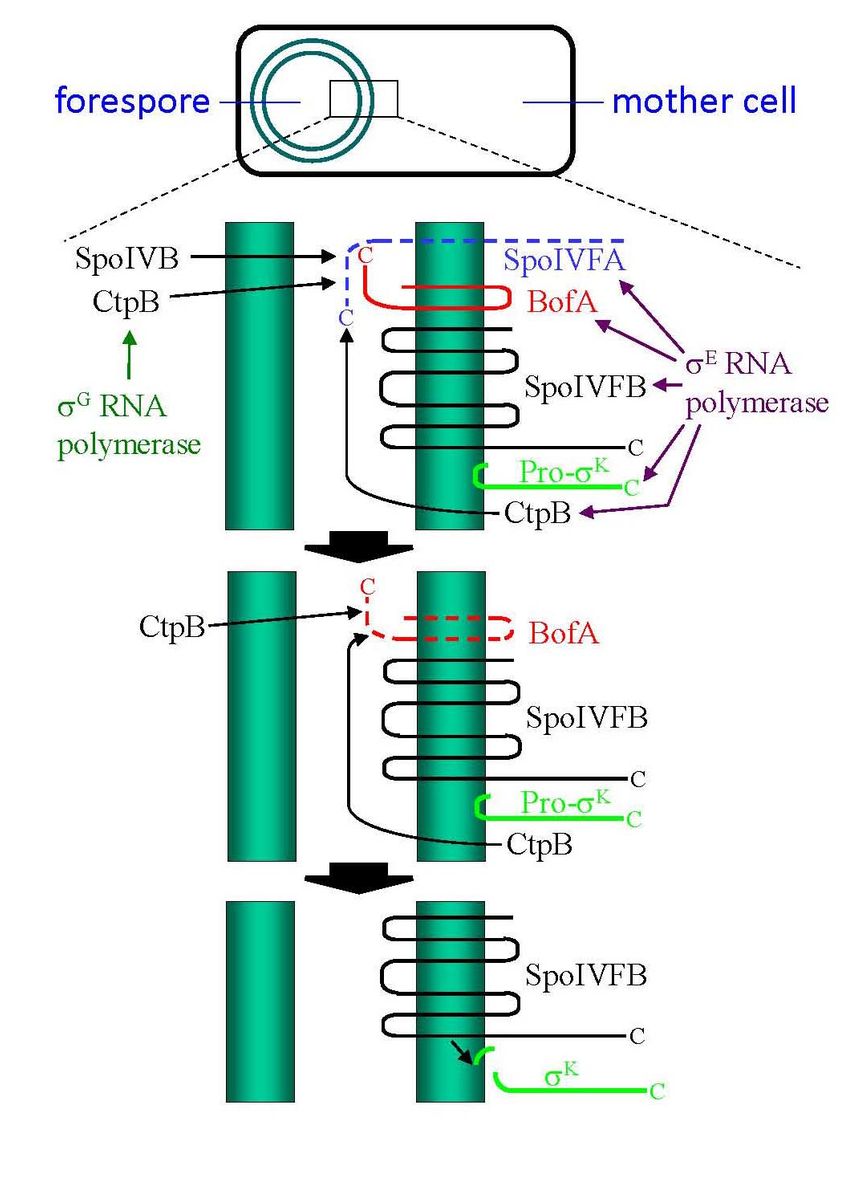Research: Project 2

During B. subtilis sporulation, the forespore is surrounded by two membranes upon the completion of engulfment (top part). The bottom parts depict a series of proteolytic cleavages. First, σG RNA polymerase in the forespore causes expression of serine proteases SpoIVB and CtpB (also expressed under σE RNA polymerase control in the mother cell), which are translocated into the intermembrane space, where they cleave the C-terminal domain of SpoIVFA to initiate its degradation (dashes). SpoIVFA is in complex with BofA and SpoIVFB in the outermost membrane surrounding the forespore, after these proteins are expressed in the mother cell under σE RNA polymerase control. In the second step, CtpB and one or more other proteases (not shown) cleave BofA to initiate its degradation (dashes). BofA is the primary inhibitor of SpoIVFB. Finally, SpoIVFB cleaves Pro-σK, releasing σK into the mother cell. Adapted from Kroos and Akiyama 2013 Biochim. Biophys. Acta-Biomembranes 1828:2873-2885.